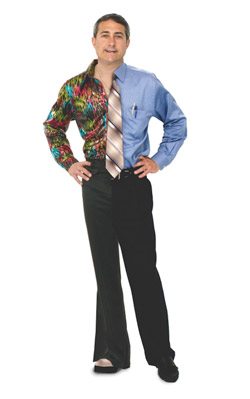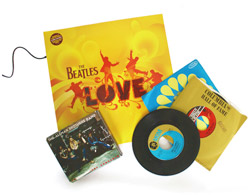09 Apr Listening To The Music
My love of music and movies motivated me to start a small HIFI business back in 1975. I have been on the scene from the time the home electronics world revolved around the vinyl LP and the vacuum tube, through today’s digital revolution. I’ll present fun, useful facts and information about home electronics in plain English, not techno-babble, on topics ranging from the nostalgic past to the latest technologies, and everything in between.
For most of us baby boomers, listening to music began as a very tactile and hands on experience. We enjoyed Motown, beach music, and the British invasion by spinning our 12″ 33 1/3 rpm LPs and 7″ 45 rpm singles on the living room console entertainment center, or on a very basic record player in our bedroom. Our music entertainment needs were met, life was good, and we were happy campers. Not so fast!
 We passed our drivers test and became brand new automotive Americans. You can’t spin vinyl in a car; but we could simply tune in to our favorite station on the car radio. The only drawbacks were annoying DJs, occasional bursts of static, and worst of all, commercials.
We passed our drivers test and became brand new automotive Americans. You can’t spin vinyl in a car; but we could simply tune in to our favorite station on the car radio. The only drawbacks were annoying DJs, occasional bursts of static, and worst of all, commercials.
Technology to the rescue! The birth of the 8-track tape with two types of tape decks to play them either at home or in the car! So now we had a much more mobile and convenient music format and we started to build a music collection all over again. But we soon found that poor sound quality, tape hiss and speed variations took away from our enjoyment of the music.
Phillips to the rescue! A short time after the introduction and acceptance of the 8-track tape format, European electronics giant, Phillips, developed a new and improved tape format, called the compact cassette. It was first released as a mono only format, but quickly became available in stereo as well. Two significant advancements followed: the ability to record and a brand new technology, by the name of Dolby Noise Reduction. The tape hiss problem was greatly reduced and best of all, we began to record our favorite tunes from records onto cassette tapes.
Although more convenient and mobile, we soon found that the cassette was plagued by a few unavoidable design and sonic limitations.
In the mid 1980’s Phillips teamed up with Sony to develop and bring to market the next big thing in music formats. You guessed it! The compact disc, better known as the CD, was introduced with magnificent fanfare and major claims of technological superiority over tape and vinyl. However, the endless hype promoting the new digital sound breakthrough of the CD was often downright misleading. The truths about CDs: portable and easier to store and less wear and tear due to laser tracking. Some of the claims that proved false included: CDs never skip; CDs are practically indestructible; and the biggest lie of all, CDs sound better than vinyl.
On paper the new CD digital technology had the advantage in signal to noise ratio and dynamic range. But in practice the digital advantage turned out to be the new CD format’s most glaring flaw. The conversion from digital back to analog proved to be the weak link. (Vinyl on the other hand is always in the analog domain. No conversion is needed.)
On the other hand, when the new shiny 5″ disc was compared to the immensely popular cassette, the laser tracking advantage of the CD proved to be too much of a sonic advantage over the old fashioned magnetic tape and tape head interface of the cassette. Furthermore, Dolby Noise Reduction was unnecessary for CD and even with age and use, there was no appreciable degradation of sonics. The cassette slowly faded into the sunset and by the mid 90’s it was officially extinct.
Vinyl is alive and well; available from small independent stores that still denote space to the reigning king of sonic performance.
Vinyl eventually also suffered its demise at the hands of the CD. For many years, the CD was the one format dominating the shelves of our record stores. (That’s right, I said record stores. We never felt quite comfortable with the term CD store; many years later we understood why.)
CD players continued to improve sonically over the next decade and by the late1990’s the sonics of even the lowest cost players became acceptable to many listeners.
In the new millennium more advanced digital music technologies were introduced by several manufacturers. By far the most revolutionary idea was the IPod from Apple.
The IPod had a monumental impact on our listening habits. Just a tiny cigarette lighter sized case, and a pair of light weight ear buds, and you are ready to rock out. Rip your complete CD collection onto your computer hard drive and then download your favorite music into the IPod; or buy music on line and load it the same way. Sounds great right?Wrong! It sounds bad. Yet, the convenience and cool factor outweigh the mediocre sound quality for the vast majority of music lovers.
 The dirty little secret that causes the flawed sonics is called MP3 compression. MP3 takes the high out of high fidelity. MP3 gets a passing grade when the listener is using a pair of average ear bud headphones. But just try to connect your Ipod to a high quality home music system. Can you say homogenized? No dynamics and no depth.
The dirty little secret that causes the flawed sonics is called MP3 compression. MP3 takes the high out of high fidelity. MP3 gets a passing grade when the listener is using a pair of average ear bud headphones. But just try to connect your Ipod to a high quality home music system. Can you say homogenized? No dynamics and no depth.
Thankfully, there are two ways to improve the sound of your Ipod. First, be sure to rip all of your music from CDs and LPs utilizing the least amount of compression as possible. Of the many compression rate options, my favorite is called Apple Lossless. At the iTunes page click on preferences, then general and then import settings. The drop down next to “import using” to give you a few options including Apple Lossless. The sonics will be close to CD quality, but you will compromise the number of songs that will fit on the IPod or computer hard drive. To me, the reduced storage capacity is a worthwhile trade off.
Secondly, the use of an IPod docking component will dramatically improve the fidelity of the music coming from your IPod. The improvement is facilitated by a vastly improved digital connection between the IPod and the IPod dock, and the quality of the digital to analog converter, also known as a DAC.
A music or media server has also become a popular source of music in the home. Consider it an IPod on steroids. The music server is a full sized component that connects permanently to your music system and stores your entire music collection. You are able to rip your entire CD collection on to the server and also call up your iTunes list of music from your PC as well. The user interface is similar to an IPod. Song lists are created and easily called up at any time. The server has a significant amount of storage space, which makes it very compatible with the better sounding Apple Lossless compressed audio file. In larger homes the music server can even be configured to play into multiple rooms or zones. Your kids can listen to the Jonas Bros in the family room while you listen to Bruce on the patio at the same time.
One last footnote: vinyl is still alive and well and is experiencing a resurgence in popularity. Turntables are available at many price and performance levels. Music lovers and devoted critical listeners have been known to spend over $100,000 for the “Aston Martin” of turntables. On the other end of the sonic spectrum, $150 will buy a mass produced, plastic turntable that will get the job done.
New and used vinyl is available from small independent record stores that still devote shelf and floor space to the reigning king of sonic performance. I would recommend Scotti’s Records in Summit to anyone who is looking for a good selection of new and used vinyl. www.scottisrecordshops.com
Two online vendors that have proven to be reliable and offer a tremendous selection are Music Direct .com and Acoustic Sounds .com. My personal favorite disc types are the extra thick vinyl pressings. Look for 180 or 200 gram pressings whenever possible. They sound terrific and they never warp.


